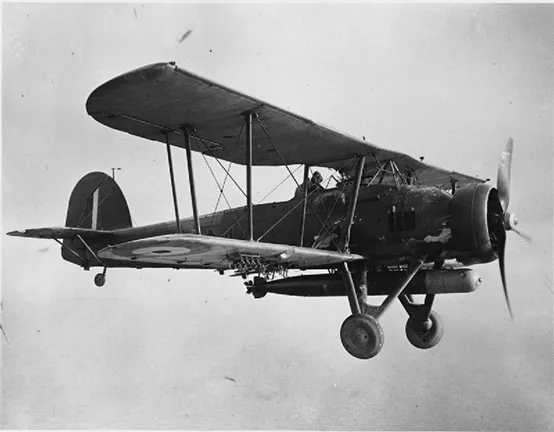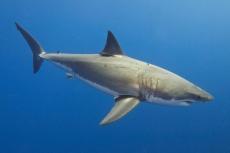Ranging from calm shore dives for beginner divers to technical diving on elusive, unmarked wreck sites, which can only be found via depth sounder—diving in Malta has it all. Just beyond Malta’s dramatic underwater landscapes of strange rock formations, chimneys and caves, visitors can discover Malta’s intriguing and piquant past.
Contributed by
Factfile
Based in Singapore, Fatin Iesa is a science educator and dive writer, certified as a PADI divemaster. She says she must have been reincarnated from a dugong, since she craves diving every other day. Always searching underwater for a pretty octopus in crevices, being surrounded by bubbles and blue is her bliss.
REFERENCES:
Gov.mt
Maltadives.com
Visitmalta.com
Wikipedia.org
Wrecksite.eu
WW2DB.com
To aid visiting divers, a newly created Underwater Cultural Heritage Unit (UCHU) has been formed within the Heritage Malta agency under the country’s cultural ministry to manage the deep historical wreck sites of Malta. The UCHU provides information regarding the history of the wrecks, how to appreciate them and what the proper etiquette is when visiting these war graves.
Currently rated as the world’s tenth smallest and fifth most densely populated country, Malta is the biggest of the three islands of the Maltese Archipelago, which also includes Gozo and Comino islands. This archipelago sits in the middle of the Mediterranean Sea, 93km south of Italy and 288km north of Africa, surrounded by warm clear waters and year-round temperate climate.
Due to its central location in the Mediterranean, this small island has historically had great strategic importance as a naval base in the power struggles between Europe, Africa and the Middle East. In the 19th century, Malta was colonised by the British. During the Second World War, Malta became the headquarters for the British Mediterranean Fleet where many ships and warplanes for the Allied powers were stationed.
Touched by the sands of time, many foreign influences have left their mark on Malta’s ancient culture. As the Maltese government conducts long-term, systematic, underwater archaeological research off the coasts of the Maltese Islands, it has managed to map out a series of underwater cultural heritage sites. The chronological timeline of the discovered wrecks ranges from a 2,700-year-old Phoenician shipwreck to battleship and aircraft wreck sites from the Second World War.
With the great diversity of nations and cultures represented on the seabed off the Maltese Islands, comes great responsibility. In order to balance the accessibility of information about the wreck sites with the preservation and sanctity of the war graves, the UCHU was formed under the national agency Heritage Malta, which is responsible for managing Malta’s cultural heritage collections, sites and museums.
The UCHU entrusts 12 Maltese dive operators to book and conduct dive tours to the 12 historic dive sites through an online booking system. Regular spot checks of the shipwrecks are done by the UCHU to ensure the protection of the cultural sites. The booking system ensures that dive operators are aware of the basic respect and treatment due to wreck sites as well as informs them of new information pertaining to underwater cultural heritage sites. Heritage Malta will strive to open three to five new sites in the next two years.
Wreckage that resulted from horrendous acts of war are now teeming with life, from beautiful corals to abundant, colourful fishes and other reef life. Aside from immersing oneself in the history of the wrecks while breathing compressed air and various gas mixtures, divers can enjoy the combination of sheer walls, caves, wrecks, plateaus, and the sandy and rocky seafloor of underwater Malta. Like Malta’s vibrant nightlife, the dive sites are beautiful at night too, when the corals glow in wonderful orange to stunning pink hues.
While there are wreck dives in Malta for all levels of recreational divers, here is a look at a few of the deep-water wreck sites for technical divers.
HMS Olympus
Seven miles off the port of Valletta, lies HMS Olympus, sitting upright on the seabed, 115m below sea level. While her gun is still intact, aimed upwards, the vessel’s posture echoes its failure to fire a shell, which otherwise could have saved the crew.
Protecting shipping convoys through the Mediterranean Sea, HMS Olympus was a WWII Royal Navy submarine designed for long-distance patrolling. On 8 May 1942, Olympus was charged with transporting the surviving crew members of stricken submarines back to England, who were returning to crew replacement submarines built in the United Kingdom. Navigating through 50,000 naval mines deployed by Axis forces in Maltese waters, she was struck by one shortly after leaving port.
Her hatches lay open, indicating the crew’s escape, as Olympus slowly sank to her watery grave. Disoriented by the darkness and misjudging the distance to the coast, just nine of the 98 men survived the seven-mile swim to shore. In honour of the fallen men, a memorial plaque has been placed at the base of the wreck.
ORP Kujawiak (L72)
The destroyer Kujawiak was given to the Polish Navy by the British Royal Navy in May 1941. Similar to HMS Olympus, Kujawiak was struck by a mine off the coast of Valletta a month after Olympus.
Polish Navy crewmen were part of an armed convoy known as Operation Harpoon. In the middle of WWII, Malta fell short of supplies. Allied powers put together a relief convoy with supplies to Malta from Gibraltar on 12 June 1942. Two days after leaving Gibraltar, the Harpoon convoy was attacked, and Kujawiak intercepted strikes by Italian submarines and torpedo planes. After successfully shooting down four Axis planes, Kujawiak attempted a dangerous rescue mission while entering Malta’s Grand Harbour. She went to rescue another ship in the convoy but ended up hitting a mine herself.
Lying at a depth of 97m, Kujawiak is fairly well-preserved except for her stern, which was badly damaged when she hit the seafloor. The ship’s bells were recovered in 2017 and are on display at the Maritime Museum of Malta.
HMS Russell
HMS Russell was a Duncan-class, pre-Deadnought battleship launched in February 1901 for the British Royal Navy. With a speed of 19 knots, she was one of the fastest warships of her time.
In April 1916, Russell was on her way to return to Malta for a fortnight to recuperate and get some minor repairs done, giving her crew some time on land. The Grand Harbour was closed due to boom defence, in which small auxiliary ships laid and maintained steel anti-torpedo nets around the harbour. While manoeuvring outside the harbour, she struck by two naval mines laid by German mine-laying submarine U-73. A fire broke out in the aft of the ship, which led to an explosion by one of the turrets, forcing the vessel to list perilously. It took 20 minutes before Russell capsized and sank, giving most of the crew enough time to escape.
Currently located about 6km east of Fort St. Elmo at a depth of around 115m, the Russell wreck site is a boat dive for technical divers on trimix. With its stern section missing, the 132m-long wreck lies completely upside down on the sandy seafloor.
Junkers Ju 88
Due to Malta’s importance as a port for the British in WWII, the strategy of the Axis forces was to bomb the harbours, towns and Allied convoys bringing supplies to Malta in order to destroy the country and starve its citizens. Between 1940 and 1943, the Siege of Malta saw the destruction of many ships and planes of both the Allied and Axis forces. Junkers Ju 88 was a German twin-engine, all-metal bomber, one of the many pawns of the Axis forces in WWII.
Divers who are interested in airplane wrecks will find the Ju 88 wreck in relatively good condition, with her broken tail a short distance away and the cockpit still retaining its forward-facing machine gun. Resting at 57m, it is one of the shallower wreck sites outside Salina Bay.
Fairey Swordfish
The Fairey Swordfish was a British single-engine biplane torpedo bomber, about 11m in length with a 14m wingspan. In 1941, Fairey Swordfish biplanes were utilised to cripple the shipping vessels of Axis forces.
This particular plane experienced engine failure in April 1934, forcing the craft into an early underwater burial. Luckily, off-duty men from the Royal Air Force’s air-sea rescue services came to the rescue of the pilot.
Deep-water wreck diving
“It is envisaged that the Maltese Islands will become a market leader in the field of deep-water wreck diving,” said Owen Bonnici, Maltese Minister for Justice, Culture and Local Government, in a recent press release announcing the launch of the UCHU.
These sunken heritage wreck sites are more than 40m deep, requiring technical diving certification to be dived and explored. With wreck remains at depths ranging from 55m to 115m, Malta offers some of the best deep-water wreck diving in the region.
Usually at these depths, the type of flora and fauna present is secondary in interest to the wrecks themselves. The sheer size of destruction in the aftermath of the world wars, combined with the rich history behind each wreck site is overwhelming.
To aid divers in properly exploring the historical wreck sites, Heritage Malta will provide dive schools and clubs with promotional and educational materials such as waterproof cards about each wreck site. Besides adhering to strict rules and regulations for diving the wrecks and maintaining the integrity of the wreck sites, dive operators are also responsible for the health and diving qualifications of the divers diving the sites.
Apart from mapping the wreck sites and making the underwater wrecks public, the UCHU is initiating an outreach programme to inform the public about the importance of Malta’s underwater cultural heritage. ■
For more information, please visit: visitmalta.com/en/home.






















































